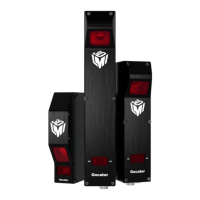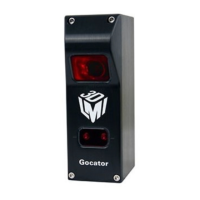Gocator Line Profile Sensors: User Manual
How Gocator Works • 66
Gocator can then perform measurements on these isolated parts.
Part detection is useful when measurements on individual parts are needed and for robotic pick and
place applications.
For more information on part detection, see Part Detection on page 153.
Sectioning
In Surface mode, Gocator can also extract a profile from a surface or part using a line you define on that
surface or part. The resulting profile is called a “section.” A section can have any orientation on the
surface, but its profile is parallel to the Z axis.
You can use most of Gocator's profile measurement tools on a section, letting you perform
measurements that are not possible with surface measurement tools.
For more information on sections, see Sections on page 190.
Part Matching
Gocator can match scanned parts to the edges of a model based on a previously scanned part (see Using
Edge Detection on page 177) or to the dimensions of a fitted bounding box or ellipse that encapsulate
the model (see Using Bounding Box and Ellipse on page 186). When parts match, Gocator can rotate
scans so that they are all oriented in the same way. This allows measurement tools to be applied
consistently to parts, regardless of the orientation of the part you are trying to match.

